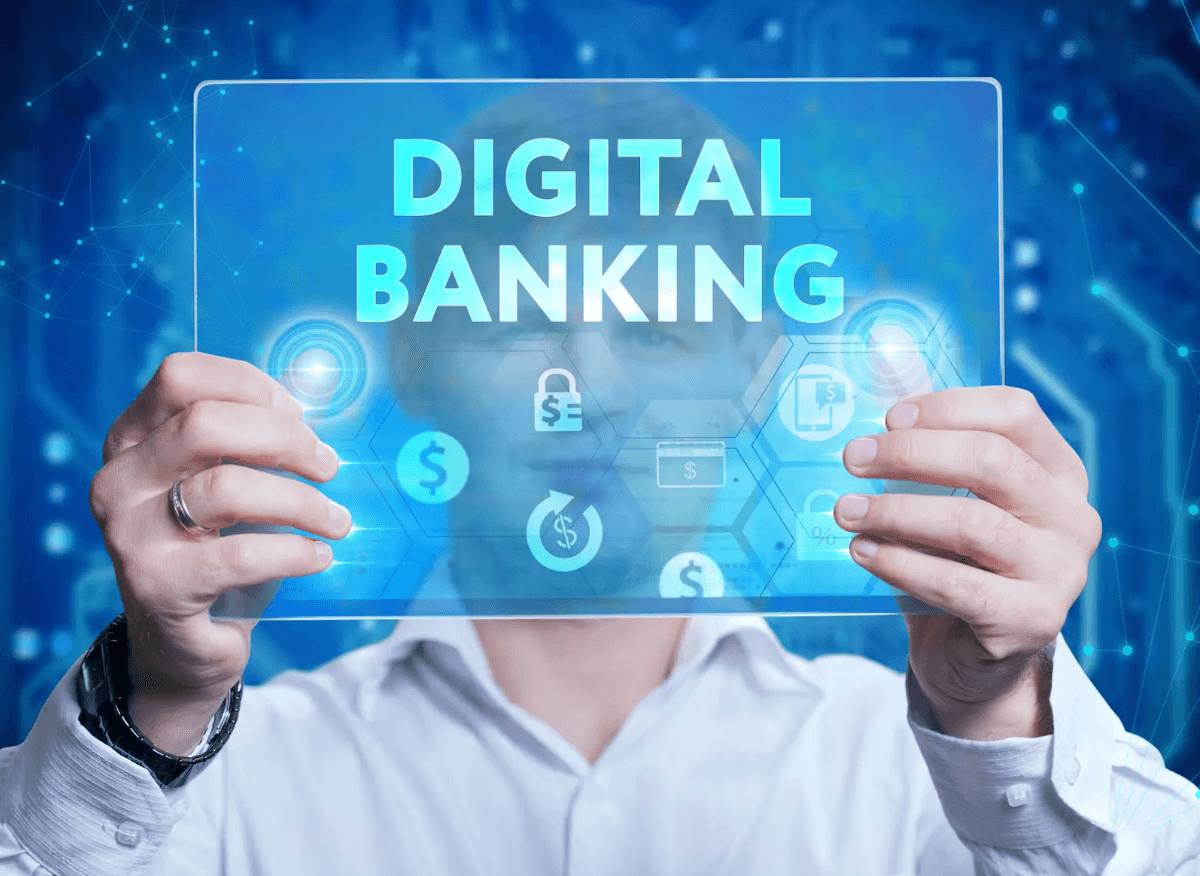As technological advancements continue to evolve, so does the way we use banking. These days, bank transactions are no longer just personal between two entities– they now take place internationally. Technological advances in digital banking have made these transactions even more secure and effortless. As innovations in the digital banking sector continue to develop, new trends are emerging that enable us to manage our money better while maintaining financial independence and privacy. As public awareness regarding the convenience, security, and privacy-enhancing characteristics of digital financial transactions increases, this has created a consumer preference for digital banking.
Digital banking market overview
Digital banking is based on the same principles that make conventional banking work: deposit currencies, claim checks, transfer money, and pay bills. Its principal features are speed, global reach, and access. It enables you to easily and quickly set up an account, transfer money between accounts, pay your bills, and check balances, make transactions online or over the phone, or communicate online with your bank.
The convenience of digital banking innovation ideas 2023 is already being felt today by foreign currency exchange specialists who are finding that so many financial institutions are moving toward noncash transactions (such as debit card transactions) that they need help finding available jobs.
7 Innovations That Deliver the Digital Banking of the Future
1 API’s (Application Programming Interfaces)
This is using a software application to interface with an IT system. These changes have become especially attractive to people who want to maintain control over their financial transactions and information and are concerned about their bank’s security, privacy, and reliability. Thanks to online banking innovations, people can now access their accounts 24 hours per day, seven days per week via the Internet. They can do this without being physically present at an ATM or teller window. Online banking provides convenience, flexibility, and security, making it one of today’s most popular financial products.
2 Biometric Technologies
Biometrics, the ability to measure and analyze human body characteristics, is a relatively new but rapidly growing field. Biometrics are now used in banking to authenticate identity and assure security. The technology commonly used by financial institutions today is called “fingerprint recognition.” Fingerprint recognition involves using a computer scanner that compares your fingerprint with a stored fingerprint image from when you originally opened your account.
3 Banking as a service
Banking as a service (BaaS) offers transactions through the Internet through some software platform. With Internet access, account holders can access their accounts online, receive statements, and make withdrawals and payments on their schedule and from anywhere in the world.
4 chatbots
A chatbot is a computer program designed to simulate human communication. Customers can use a chatbot to interact with their bank via various channels, such as voice, video, or text chat, anytime, anywhere, and on any device. The majority of financial institutions today employ chatbots in digital banking technologies.
5 AI and IoT
Artificial intelligence (AI) uses computers that appear human-like in their judgments, behavior, and abilities. The idea of AI goes back to the 1940s when Turing proposed a test to distinguish computers from people. Now, banks widely use AI to ease and enhance customers’ interactions with financial institutions. They use AI and machine learning technologies to analyze customer information, identify patterns and trends and make informed decisions based on those analyses.
6 Process Automation
Process automation uses computer technologies to simplify the production, processing, and delivery of goods by reducing errors. This is made possible through automation within a manufacturing environment in which tasks are broken down into discrete steps that are then carried out by computers. This reduces the need for human intervention and mistakes. It also makes it easier to track and trace products, maintain consistency throughout an entire production line, integrate various suppliers’ systems, and coordinate with other processes throughout a business organization.
7 Microservices
Microservices are small, single-purpose components that make up a more extensive application or platform. Microservices may be virtual, physical, or a combination of the two. These services may be used within banking, such as a mobile app or an online banking service. Microservices are also found in other areas, such as retail banking, marketing, and entertainment. The concept of microservices is designed to systematically build software applications and solutions into a branchless structure that has fewer technical constraints and can more easily adapt to changing business requirements. A microservice ecosystem consists of multiple vendors that offer similar services and products in the same way Linux is a common platform for operating systems.
innovations in banking industry have brought about new customer identification and account authentication methods to ensure the safety and security of financial transactions. Using biometrics allows banks to assess customer risk using facial recognition, voice recognition, and finger vein recognition systems. Banking as a service will enable customers who use online banking to access accounts via smartphones and other mobile devices. Chatbots are used in online banking conversations to enhance the user experience.
Mobile payments have been rising rapidly over the last few years. Many people today use their smartphones as their primary form of payment when purchasing goods and services. It is a safer, more convenient way of making financial transactions with the added benefit that it can be done almost immediately – often while standing in front of the vendor or service provider with whom you are doing business. The majority of banks also offer mobile apps that make it easy for account holders to monitor their accounts, pay bills, transfer money to another account holder, and more without visiting a bank branch or ATM.

